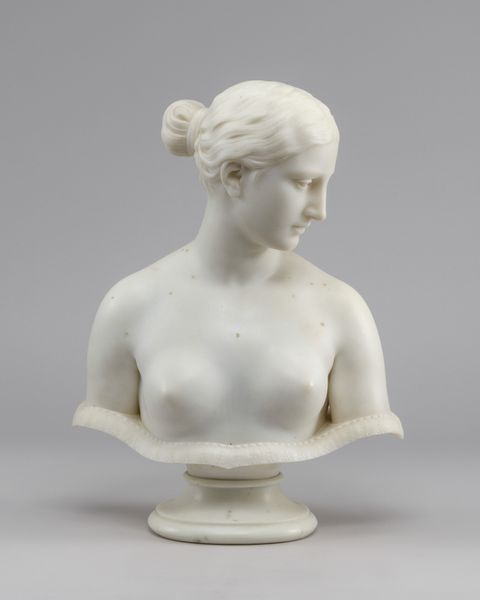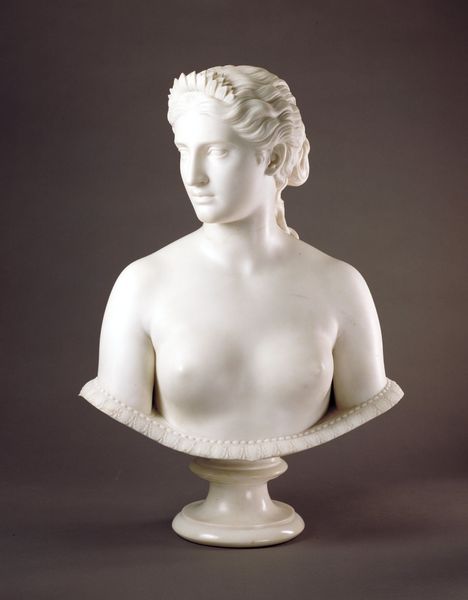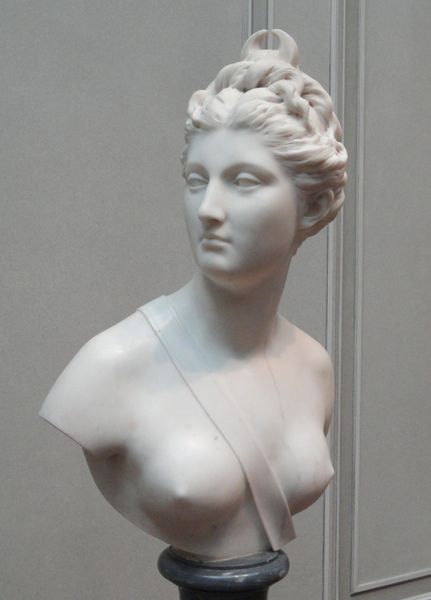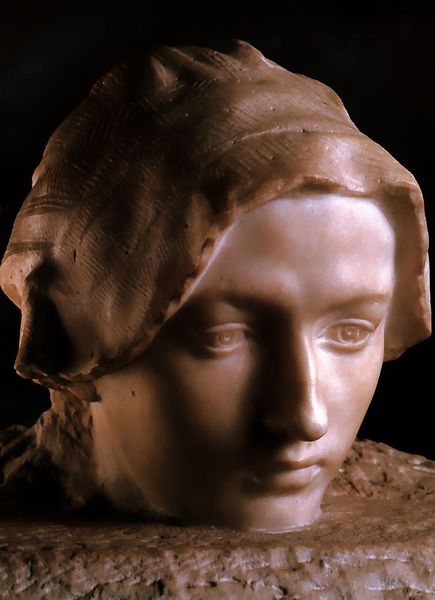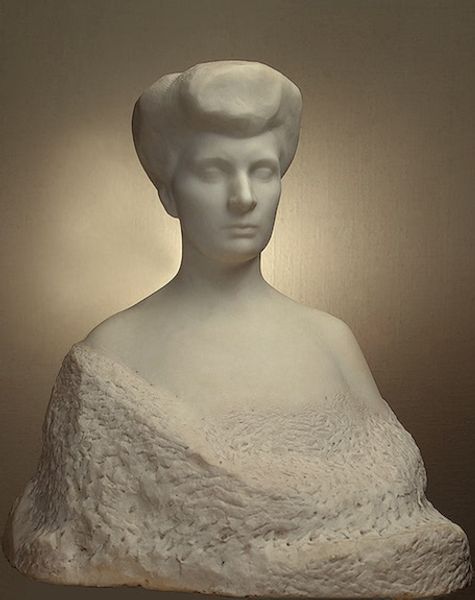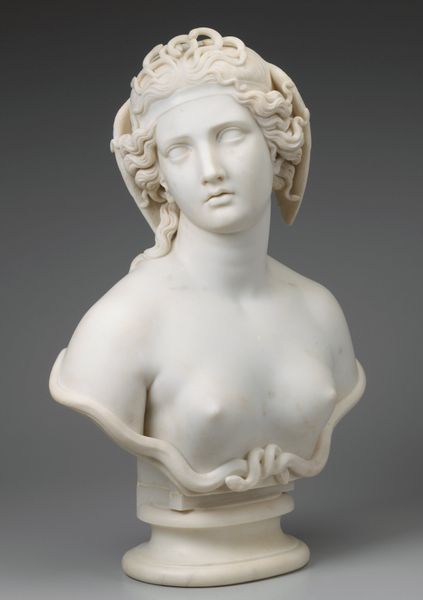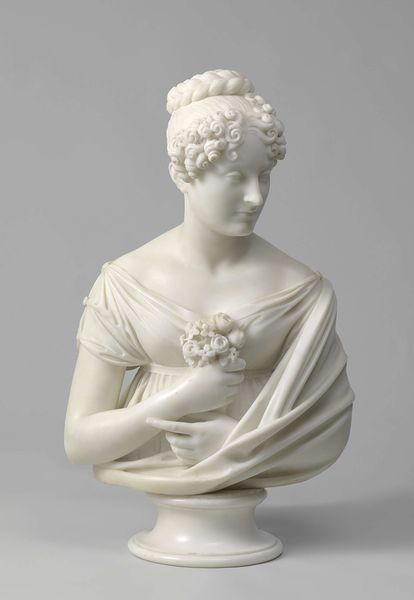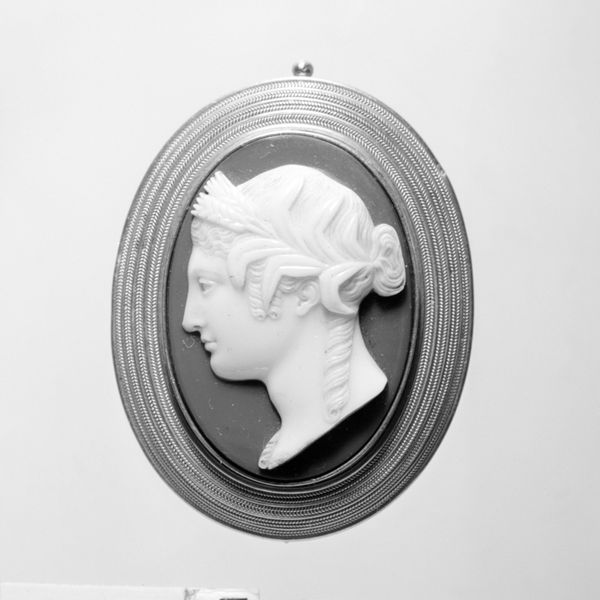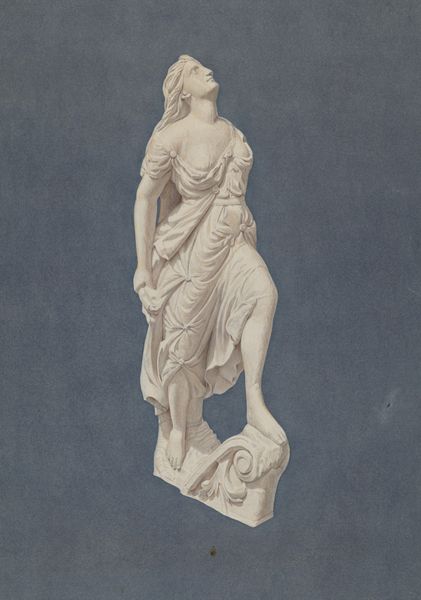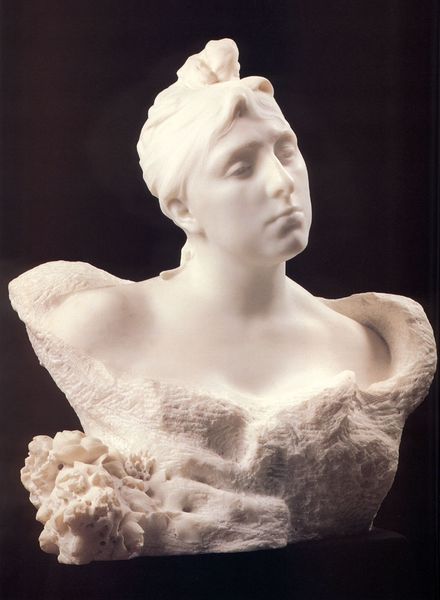
sculpture, marble
#
portrait
#
neoclacissism
#
figuration
#
sculpture
#
marble
Copyright: Public Domain
Here stands Hiram Powers’ marble sculpture, a “Bust of the Greek Slave,” embodying neoclassical ideals. This work captures the essence of the enslaved maiden, but it is not her captivity alone that speaks to us. Consider the turn of her head, a gesture laden with emotional weight. It echoes the ancient Venus Pudica motif, where modesty and vulnerability intertwine, seen in classical sculptures across millennia. This head position, downcast with a slight turn, speaks volumes about inner turmoil and external oppression. We trace its legacy back to antiquity, from grieving figures on sarcophagi to medieval depictions of the Virgin Mary in mourning. It resurfaces in countless iterations, each bearing witness to human suffering and resilience. The emotional power of this pose, deeply embedded in our collective memory, engages viewers on a profound level. Powers taps into this subconscious understanding, evoking empathy and prompting reflection on the enduring themes of subjugation and resistance. This gesture, a timeless symbol, reminds us of the cyclical nature of history.
